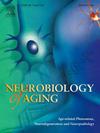Acute corticospinal and reticulospinal responses to strength training in ageing
IF 3.7
3区 医学
Q2 GERIATRICS & GERONTOLOGY
引用次数: 0
Abstract
Ageing is associated with declines in neuromuscular function, yet the neural mechanisms underlying strength adaptations in older adults remain unclear. While the corticospinal tract (CST) is the primary pathway for voluntary movement, the reticulospinal tract (RST) may play a compensatory role with age. This study investigated CST and RST responses following a single session of high-intensity metronome-paced strength training (MPST) in young and older adults. Thirty-five participants (17 young, 18 older) performed unilateral biceps curls at 70–75 % of their one-repetition maximum (1-RM). Cortical and subcortical excitability were assessed pre- and post-exercise using transcranial magnetic stimulation (TMS) and the StartReact paradigm. Young adults showed significant increases in corticospinal excitability (CSE; p < 0.05) and early-phase motor evoked potentials (MEPs) following exercise, whereas no changes were observed in older adults. Both groups exhibited reductions in silent period duration (SP; p < 0.01) and short-interval intracortical inhibition (SICI; p < 0.05), suggesting a general release of inhibition. However, no significant changes in reaction time or evidence of enhanced RST drive were observed in either group. These findings highlight age-related differences in the modulation of descending pathways, with older adults showing reduced CSE plasticity following acute MPST, possibly reflecting delayed potentiation due to ageing. Although MPST effectively reduced inhibition, it may be insufficient to engage the RST in older adults. Future research should explore alternative training modalities that more directly target subcortical circuits to optimise functional outcomes in ageing populations.
老化中力量训练的急性皮质脊髓和网状脊髓反应
衰老与神经肌肉功能下降有关,但老年人力量适应的神经机制尚不清楚。虽然皮质脊髓束(CST)是自主运动的主要途径,但网状脊髓束(RST)可能随着年龄的增长而发挥代偿作用。本研究调查了年轻人和老年人在单次高强度节拍器节奏力量训练(MPST)后的CST和RST反应。35名参与者(17名年轻人,18名老年人)以70-75 %的单次重复最大值(1-RM)进行单侧二头肌卷曲。使用经颅磁刺激(TMS)和StartReact范式评估运动前和运动后的皮层和皮层下兴奋性。年轻人表现出显著的皮质脊髓兴奋性(CSE;p <; 0.05)和运动后的早期运动诱发电位(MEPs),而在老年人中没有观察到变化。两组均表现出沉默期持续时间(SP;p <; 0.01)和短时间期皮质内抑制(SICI;P <; 0.05),提示抑制普遍释放。然而,两组均未观察到反应时间的显著变化或RST驱动增强的证据。这些发现强调了下降通路调节的年龄相关差异,老年人在急性MPST后表现出CSE可塑性降低,可能反映了衰老导致的延迟增强。虽然MPST有效地减少了抑制,但它可能不足以参与老年人的RST。未来的研究应该探索替代的训练模式,更直接地针对皮层下回路,以优化老年人的功能结果。
本文章由计算机程序翻译,如有差异,请以英文原文为准。
求助全文
约1分钟内获得全文
求助全文
来源期刊

Neurobiology of Aging
医学-老年医学
CiteScore
8.40
自引率
2.40%
发文量
225
审稿时长
67 days
期刊介绍:
Neurobiology of Aging publishes the results of studies in behavior, biochemistry, cell biology, endocrinology, molecular biology, morphology, neurology, neuropathology, pharmacology, physiology and protein chemistry in which the primary emphasis involves mechanisms of nervous system changes with age or diseases associated with age. Reviews and primary research articles are included, occasionally accompanied by open peer commentary. Letters to the Editor and brief communications are also acceptable. Brief reports of highly time-sensitive material are usually treated as rapid communications in which case editorial review is completed within six weeks and publication scheduled for the next available issue.
 求助内容:
求助内容: 应助结果提醒方式:
应助结果提醒方式:


